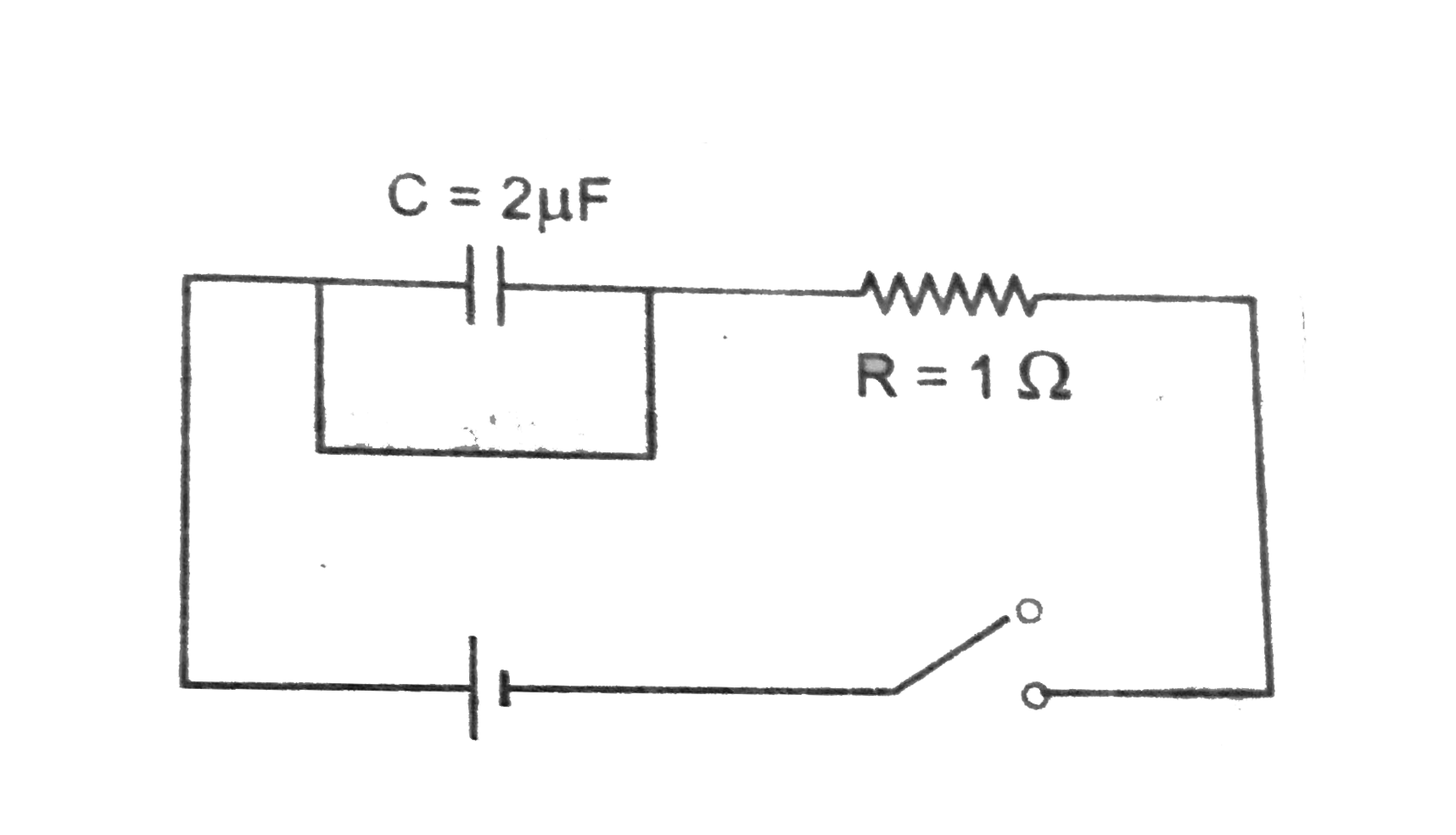Assertion : The capacitive reactance limits the amplitude of the current in a purely capacitive circuit.
Reason : Capacitive reactance is proportional to the frequency and the capacitance.
If both assertion ans reason are true ans reaason is the correct explanation of assertion.
If both assertion and reason are true but reason is not the correct explanation of assertion.
If assertion istrue but reason is false.
If both assertion and reason are false.
The correct Answer is:C
To solve the given question, we need to analyze both the assertion and the reason provided.
1. Understanding the Assertion:
- The assertion states that "the capacitive reactance limits the amplitude of the current in a purely capacitive circuit."
- In a purely capacitive circuit, the current (I) is related to the voltage (V) and the capacitive reactance (Xc) by the formula:
I=VXc
- Since Xc is a measure of how much the capacitor resists the flow of current, a higher capacitive reactance will result in a lower current amplitude. Therefore, this assertion is true.
2. Understanding the Reason:
- The reason states that "capacitive reactance is proportional to the frequency and the capacitance."
- Capacitive reactance (Xc) is given by the formula:
Xc=1ωC=12πfC
- From this formula, we can see that Xc is inversely proportional to both the frequency (f) and the capacitance (C). This means that as frequency increases, capacitive reactance decreases, and vice versa. Therefore, this reason is false.
3. Conclusion:
- Since the assertion is true and the reason is false, we conclude that the correct answer is that the assertion is true but the reason is false.
Final Answer:
- The assertion is true, but the reason is false.
- The assertion states that "the capacitive reactance limits the amplitude of the current in a purely capacitive circuit."
- In a purely capacitive circuit, the current (I) is related to the voltage (V) and the capacitive reactance (Xc) by the formula:
I=VXc
- Since Xc is a measure of how much the capacitor resists the flow of current, a higher capacitive reactance will result in a lower current amplitude. Therefore, this assertion is true.
- The reason states that "capacitive reactance is proportional to the frequency and the capacitance."
- Capacitive reactance (Xc) is given by the formula:
Xc=1ωC=12πfC
- From this formula, we can see that Xc is inversely proportional to both the frequency (f) and the capacitance (C). This means that as frequency increases, capacitive reactance decreases, and vice versa. Therefore, this reason is false.
- Since the assertion is true and the reason is false, we conclude that the correct answer is that the assertion is true but the reason is false.
- The assertion is true, but the reason is false.
Topper's Solved these Questions
- ALTERNATING CURRENT BOOK - NCERT FINGERTPS ENGLISHCHAPTER - ALTERNATING CURRENT EXERCISE - Ac Voltage Applied To A Resistor
17 Videos
- ALTERNATING CURRENT BOOK - NCERT FINGERTPS ENGLISHCHAPTER - ALTERNATING CURRENT EXERCISE - Ac Voltage Applied To A Inductor
5 Videos
- ALTERNATING CURRENT BOOK - NCERT FINGERTPS ENGLISHCHAPTER - ALTERNATING CURRENT EXERCISE - NCERT
7 Videos
- ATOMS BOOK - NCERT FINGERTPS ENGLISHCHAPTER - ATOMS EXERCISE - Assertion And Reason
15 Videos
Similar Questions
Knowledge Check
Assertion : The inductive reactance limits amplitude of the current in a purely inductive circuit.
Reason : The inductive reactance is independent of the frequency of the current.AIf both assertion ans reason are true ans reaason is the correct explanation of assertion.BIf both assertion and reason are true but reason is not the correct explanation of assertion.CIf assertion istrue but reason is false.DIf both assertion and reason are false.Assertion: Increasing the charge on the plates of a capacitor means increasing the capacitance.
Resion : Capacitance is directly proportinal to charge.AIf both assertion and reason are ture and reason is the correct explanation of assertion.BIf both assertin and reason are ture but reason is not the correct explanation of assertion .CIf assertion is true but reason is false.DIf both assertion and reason are false.In a pure capacitive circuit if the frequency of ac source is doubled, then its capacitive reactance will be
Aremains sameBdoubledChalvedDzero
The resultant capacitance of given circuit is

View Solution(a) Define the SI unit of capacitance.
View SolutionThe average power dissipation in a pure capacitance in AC circuit is
View SolutionThe capacitive time constant of the RC circuit shown in the figure.

View SolutionCapacitance of network is

View Solution
